On The Record with Jay O’Neil, St. Francis University Water Polo Coach
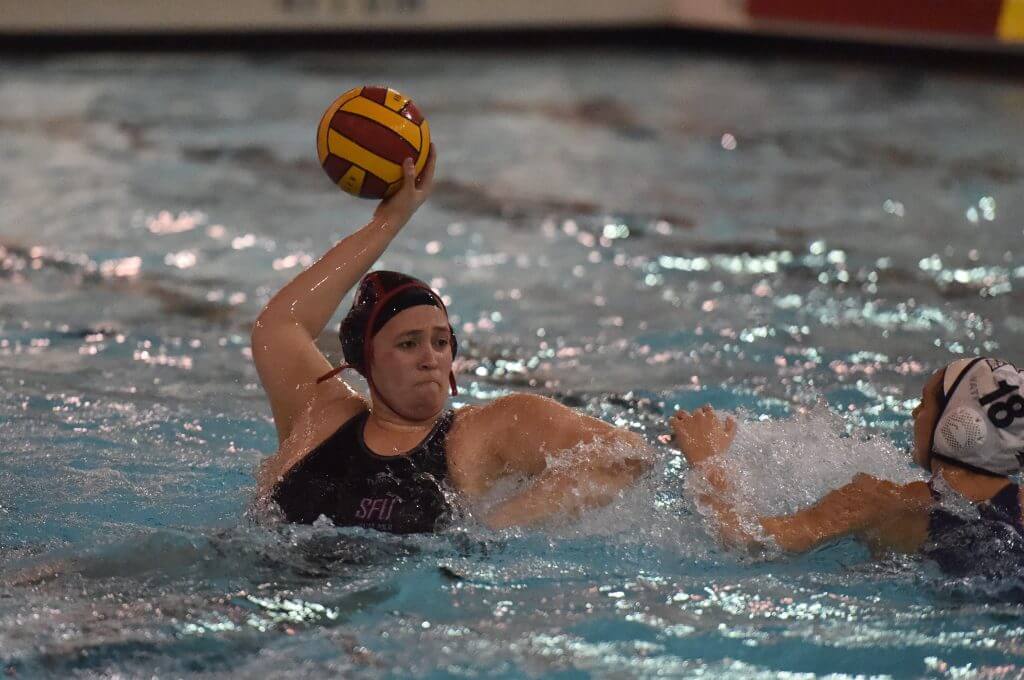
By Michael Randazzo, Swimming World Contributor
Editor’s Note: Swimming World kicks off its coverage of the 2018 NCAA Women’s Varsity water polo. Look for interviews, conference predictions and the best coverage of the sport in America and beyond.
That Jeremiah “Jay” O’Neil ended up coaching aquatic sports is perhaps no surprise. The question is: which sport would he choose? Son of a long-time swim coach, O’Neil was introduced to water polo while swimming for Plum High School in Pittsburgh. Over the next two decades, he has been a polo player, coach and referee. But he also spent a decade as a swim coach at Somerset Area High School.
Lucky for St. Francis University’s nascent women’s program, O’Neil chose coaching polo over swimming.

Last year, the Red Flash joined a wave of new NCAA varsity water programs, with head coach Pat Beemer leading their inaugural season of play. After a campaign that saw Beemer’s squad rally from a five-goal deficit to stun George Washington in their first ever Collegiate Water Polo Association (CWPA) conference tournament, the program suffered two major set-backs. First, their coach left to assume men’s and women’s coaching duties at University of La Verne in California. Then leading scorer Emily Wickenheiser (94 goals) declined to return for her sophomore year, dealing the program another blow.
Enter O’Neil, who brings a new attitude and offense to the Red Flash as they seek to compete in the East’s toughest conference for women’s polo. Named the Saint Francis coach last September, O’Neil continues a coaching career that started when he was a volunteer assistant for the women’s water polo club at Bucknell. It includes stops at Salem International and Washington and Jefferson College, where he coached the men’s and women’s water polo teams for four seasons. He led the Presidents to some of their most impressive results, including 2012, when he won CWPA Women’s Water Polo Coach of the Year honors, and 2015, when the men qualified for the CWPA Championships for the first time ever.
Taking a break from his team’s first week of practice, O’Neil spoke with Swimming World about the growth of polo in Western Pennsylvania, the age-old question of water polo training’s impact on swimming, and his young team, which is looking to make a splash this season in the CWPA.
– How did you get started in water polo.
I grew up in Pittsburgh, and we had a high school coach, Mark Rauterkus, who brought the sport to our school. It was just a club sport back then; Plum High School and a couple of other school districts played.
I began playing when I was about 15 and just loved it. To have a swim coach who also liked water polo was pretty awesome. That doesn’t always happen in the swimming world.
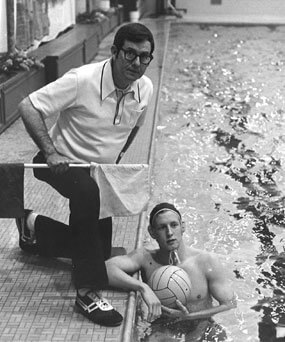
Dick Russell. Photo Courtesy: Bucknell Athletics
When I started looking at colleges, I was recruited by Coach [Dick] Russell of Bucknell. I mentioned to him that I’d really like to play water polo too, so I spoke with Coach [Alan] Huckins in the middle of the summer and he said: “Sure!”
It was eye-opening for me, [coming] from playing club water polo in an area where it wasn’t big. You walk on deck as a 5-10, 150 lbs freshman and you’re like: “Wow, I’m just gonna have to be the small, fast guy.”
I learned an unbelievable amount about the game over the next four years. My junior and senior years I helped Mike Wooster coach the women’s water polo team, which back then was still a club team. That’s where I got into coaching.
– There’s a robust water polo scene in Western Pennsylvania, including people like former Navy head coach Mike Scofield — now a referee — who hail from Pittsburgh.
Schofield refereeing, What a sight! I’ve known Mike for over 20 years.
When I was not coaching, I was refereeing college [games]. I recently told him: “If I have you on our games this women’s season I’m gonna give it to you like you gave it to me all those years.” He said: “Of course! I’d expect nothing less.”
– How does your experience as a referee inform your perspective as a coach?
It’s a fun transition from player, to referee to coach, back to referee. It allows you to see the game from all perspectives. That doesn’t always happen as a coach. When you’re trying to win games and you disagree with a call you’re generally going to let the referee go and then you watch the tape and think: “Yeah, that was definitely the correct call.”
But when the call goes against you in a one or two goal game you think: “That was a terrible call!”
I will say, it has to be one of the hardest games to officiate. So many moving parts, lots of gray areas, playing the advantage rule—it all makes it very difficult for the officials.
– What was it that drew you to coaching early in your water polo career?
At that time I really loved the game and — after talking with Mike [Wooster] — he was open to my assistance. The more I did it, the more I liked it.
It also helped me understand the game better. Since I was still in college, it was always much better on the deck than in the pool. I would be up on deck with Coach Wooster and I would understand what he was yelling about at practice. It was another perspective, and at the time I was doing it to help out the team; I really hadn’t thought about coaching. It wasn’t until I took the position at Salem where I decided that I really wanted to do this.
– You kept your hand in swimming as the coach at Somerset Area High School. How did this help shape your ideas about how water polo and swimming overlap?
It’s unheard of in this day and age to have dual sport athletes, at least at the DI level. When I was at Bucknell, I would say at least 60% to 75 % of the men’s team also swam. That was just part of what you did. I’ve always had my hand in both. My father [Jerry] was a swim coach for a long time.
When I left Salem and was able to get the aquatics position at Somerset High School, that obviously came with coaching swimming. For me, it was always about the coaching; the aquatics director [position] was just a means to an end. If you want to be the coach, you have to be the aquatics director.
We had a club water polo team there for a couple of years. We had some players that went on and played in college, so it’s pretty much always been both. I’ve always been involved in one or the other.
– Then you went to Washington and Jefferson, a great school for academics that just happened to have water polo.
In general, water polo players — if you look at the schools that support polo — are generally very good academic schools. That seems to be the type of athlete that water polo attracts.
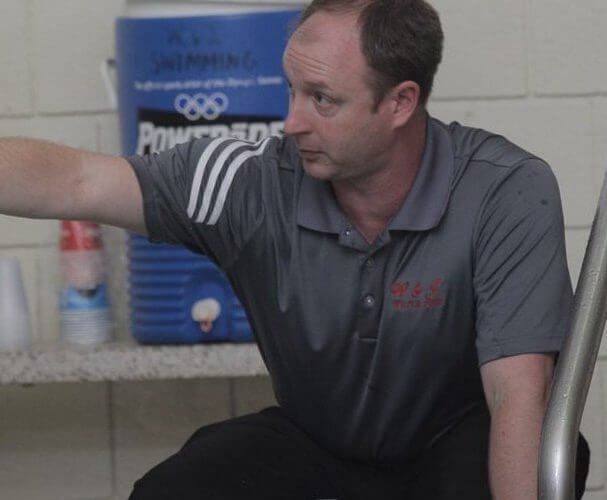
O’Neil at Washington & Jefferson. Photo Courtesy: W&J Athletics
W&J’s program was started by Mike Orstein, the swim coach in 1999. I was still at Salem and helped him get his ducks in a row. Back then, the USOC [United States Olympic Committee] was giving out grants to colleges that would start water polo programs. That’s why you have [polo] at a lot of Division III’s and Mercyhurst and Gannon. I’m pretty sure they all started around the same time with that grant — which was a great thing.
I had a great time at W& J and had some fantastic athletes on the women’s side and men’s side. Whether you play DIII or DI it’s still all about the academics. At the higher level, you’re going to have a little more to say as far as scheduling, and students missing class, but I had players on both sides of W&J that could have played Division I water polo, but they chose to go to a smaller school perhaps to major in a subject the DI that was recruiting them wasn’t really strong in.
– As a swim coach, what do you say to the folks who believe that if aquatics athletes play water polo, it will impair their swim stroke?
I think that’s completely false. I’ve seen players who were amazing swimmers; if you look back, Brad Schumacher was a dual Olympic athlete. And Matt Biondi played water polo, at least through college.
It can be done. If you look right now, it’s something that happens at the DIII level. I don’t know of any men that do both at the DI level.
On the women’s side it’s a lot harder, just because the men’s season transitions right into swim season. Whereas, with the women’s season you have to wait until after conference championships, so they miss a good portion of the season.
We have two polo players here who also swim. Camillie Nguyen is a freshman, Erin O’Neill is a sophomore, who transitioned very well last year right into the team. The great thing is that you don’t have to worry about them coming into the season. The day they start they’re in shape.
It’s not the most ideal situation but it can definitely work.
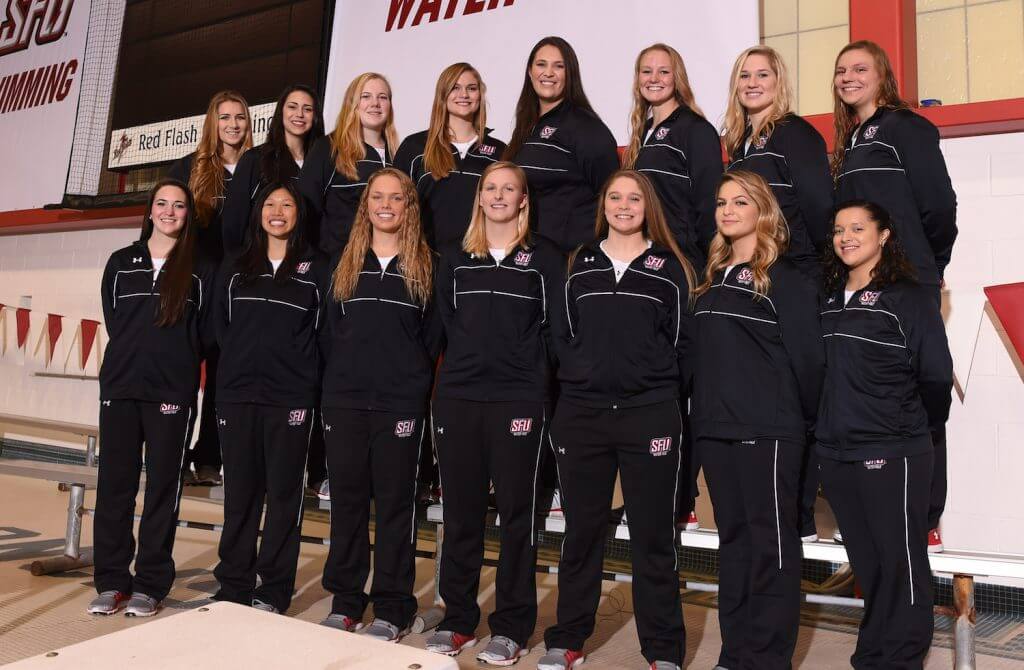
The 2018 Red Flash Water Polo Team. Photo Courtesy: St. Francis Athletics
– You were not there but the Red Flash’s already have a signature win: 11-10 over George Washington in the 2017 CWPA tournament. How does this success inspire you and your players?
The players still talk about that win. I’ve watched the game on film; they were down and ended up battling back. That is more to build on then the actual win. The fact that you have a team that shows resolve; things were not going well early in that game, but no one gave up. They rallied behind each other. That’s what this team is all about.
Last year’s team was a group of junior college transfers and freshmen. Coach Beemer and the players did a great job of making sure there was good team chemistry. The players understand what’s expected of them in the pool and in the classroom. They work tremendously hard and are always there for each other.
They realize that was a big win last year for the program, so [now they say to me]: “Coach, who are we going to knock off this season?”
We want to work as hard as we can to be as good as we can. That goes to that first year; it’s impossible to have a culture after one year but it was a very good start.
– The CWPA is a tough conference, especially for a young team. What do you hope for in year two for your program?
Michigan is always going to be near the top. Indiana. All the Ivies. There’s not a bad team whatsoever in the conference. We are trying to become more competitive in the conference every single year. Like any other sport, you’re going to have your ups and your downs. The women’s water polo season is long; luckily, we play quite a few games before we start conference play.
Our first game of the year is against Wagner at the Bucknell invite. [The Seahawks] are capable of beating any CWPA team on any given day.
When the schedule came out, the team was excited to start the season off with one of the best teams on the East Coast.
No one would say that it four years we’re going to win the CWPA —that’s a tall order for anyone. We’re looking to add pieces that will help us and fit the style of play that I like to coach and that will help us improve in the standings.
– What is the style of play that you will play this season?
A lot of ball control. I won’t mention their name, but a really good water polo coach once told me that the game of water polo is very simple but the fundamentals are very hard. Water polo is whoever can play keep away the best is going to win.
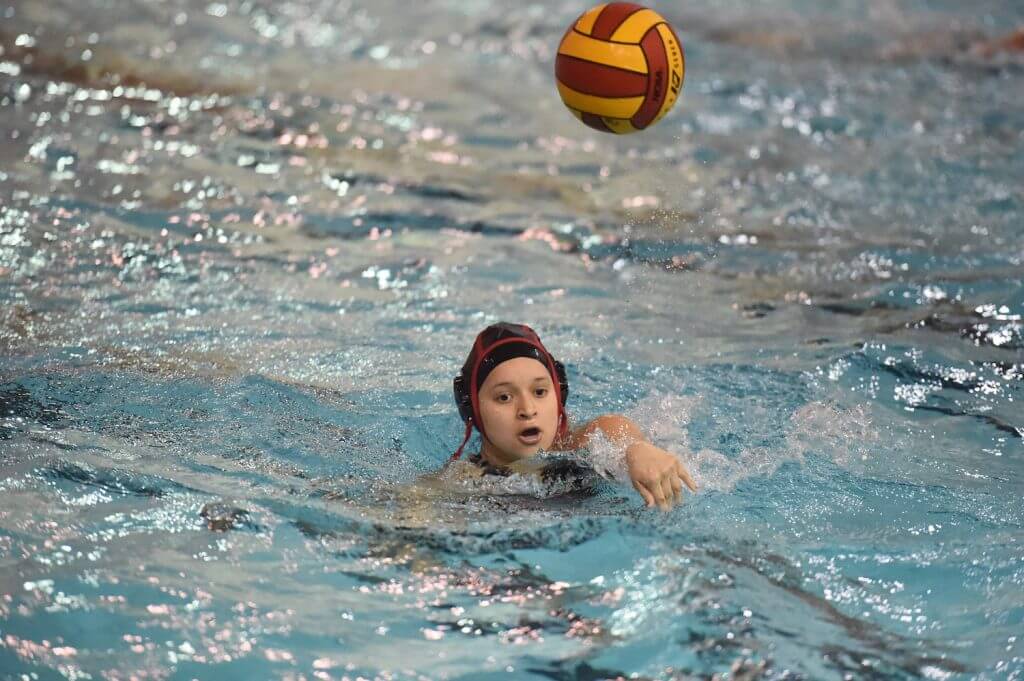
Co-Captain Tina Bonilla. Photo Courtesy: St. Francis Athletics
I do like speed but I also like players who are fundamentally sound. We do a ton of fundamental work in practice.
Water polo is the same as every other sport. The more fundamentally sound you are — and you don’t have to be the biggest, you don’t have to be the fastest — if you’re going to be fundamentally sound you’re going to be good.
– What your team lacks in experience—five seniors—they make up in depth—20 athletes. How does your experienced players help shape what is a young squad?
The seniors are definitely the leaders on the team. Our captains this year — Missy McCreary and Tina Bonilla — are fantastic. You couldn’t ask for better captains. You can also see some of the sophomores really stepping up, realizing that next year they’re going to be the leaders. It’s great to see that transition.
We’ll definitely miss the seniors; the one [new] junior college transfer we have and the sophomores are definitely going to be able to lead things next year.
– Maria Eleni Seletopoulou of Greece joins the Red Flash this season.
Maria Eleni is a huge signing for us. She’s a member of the Greek Junior National Team that got the silver medal at Junior World Championships this summer. Having that caliber of player — I’ve seen it in the few practices we’ve had — it’s just going to raise everyone’s level of play.
– Almost the entire roster returned for this season. Missing is Emily Wickenheiser, last season’s leading scorer. How do you replace her in your offensive scheme?
We’re a deeper team this year, which is going to help everybody. From the limited game film that I watch last year, and the one game I officiated of St. Francis, we’re going to play a different style this year, which is more appropriate for the talent we have on our roster.
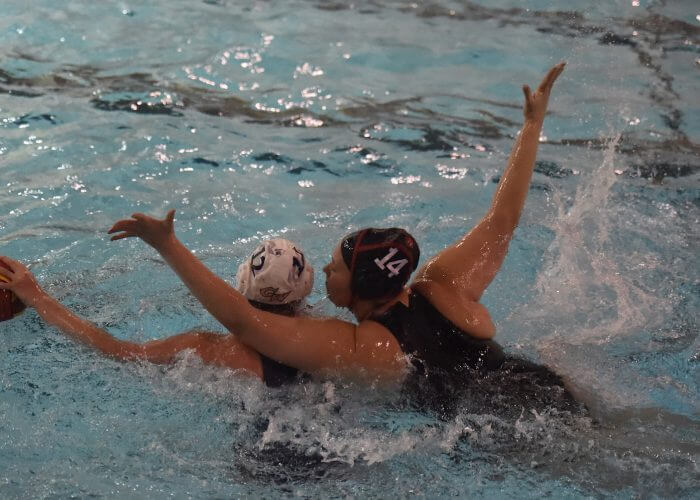
Photo Courtesy: St. Francis Athletics
Coach Beemer and I run completely different offenses; we’re going to run a more FINA Style offense then he ran last year.
This year we’re going to have a lot of players that step up. Our center, Kelly Fehr, is an excellent player, and we have a freshman, Gwynn Wetherbee, who’s our secondary center and also a very good player. We really looking to utilize those two. Because in the game of water polo, If you have centers that people are afraid of then you get good looks from the outside. And we do have good outside shooters.
Our roster size is 20 now with Maria Eleni, so that will let us run a more up-tempo offense because we’ve got a deeper team and will be able to sub more.
– I see only one goalie—Kate Wilke—listed on your roster. Will she be your only netminder this season?
We have a goalie who committed during the regular signing period. But this year we only have one goalie.
It’s not ideal, but you have to play with the cards your dealt, and Kate is an excellent goalie. I do kid her that we’re going to give her a giant bubble to walk around campus so that she doesn’t get hurt.
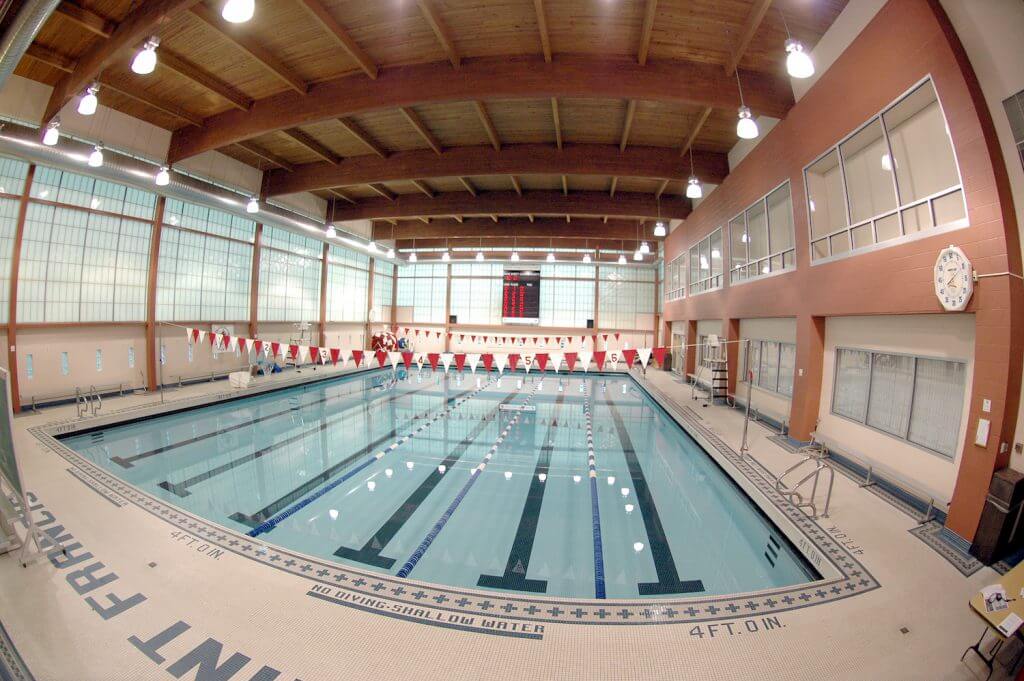
Stokes Natatorium at St. Francis. Photo Courtesy: St. Francis Athletics
– As you look at the kind of program you want to build in Loretto, where do you think the ideal St Francis University water polo player will come from?
I’ve never been a coach that relies on recruiting players from a certain area. There are great water polo players everywhere in the U.S. that water polo is played. The Chicago area is a place that I’m looking at; Matt Farmer, the starting center for the UCLA men, is a Chicago guy. Dani Jackovich, a center on Stanford’s women’s team, is also from there.
You look at Florida; some fantastic players are coming up from there every year. Texas, Ohio, Pennsylvania — even Hawaii.
[We look for] someone who likes the atmosphere of the school, is strong in their major and then water polo is part of the stories they’re going to tell their grandkids in thirty years.



